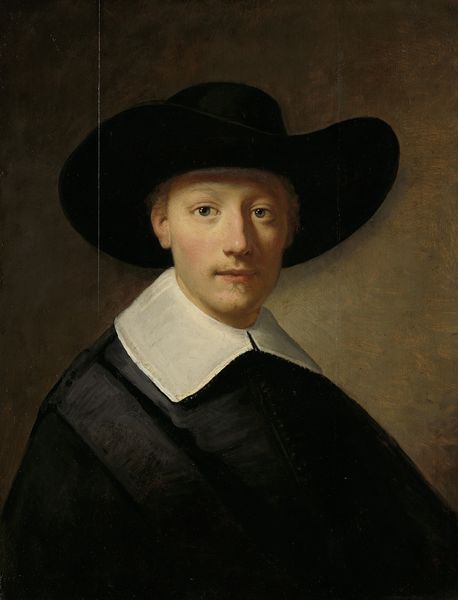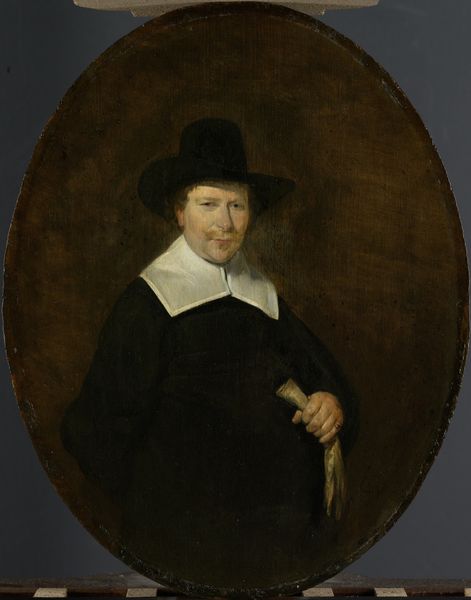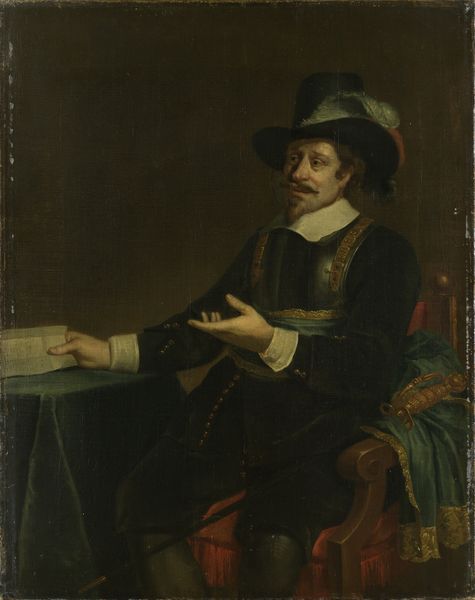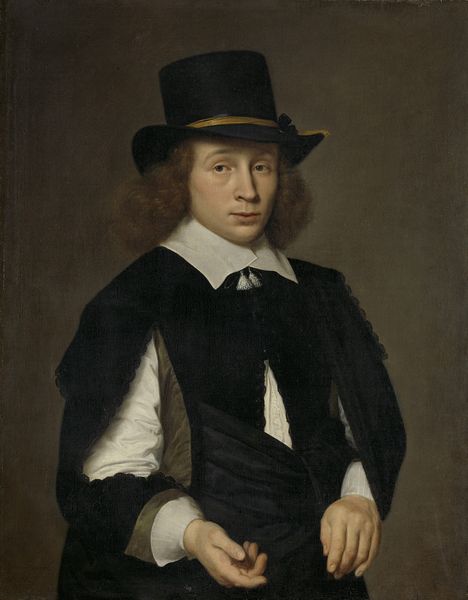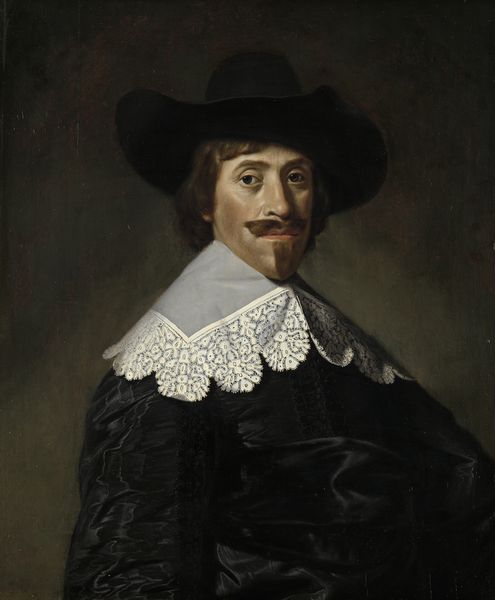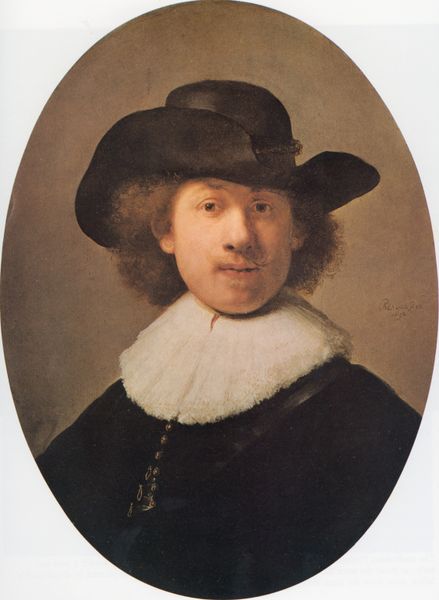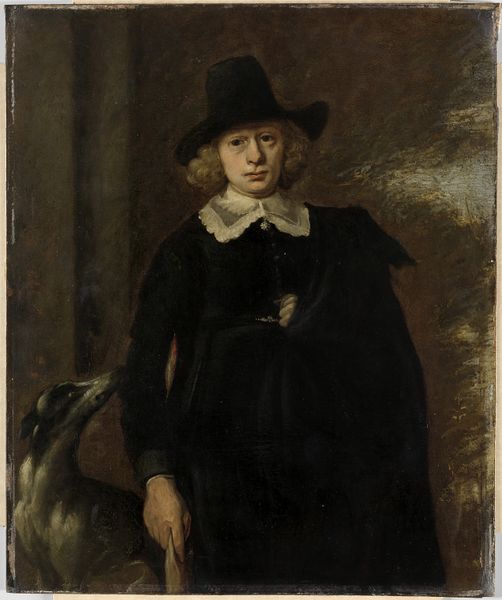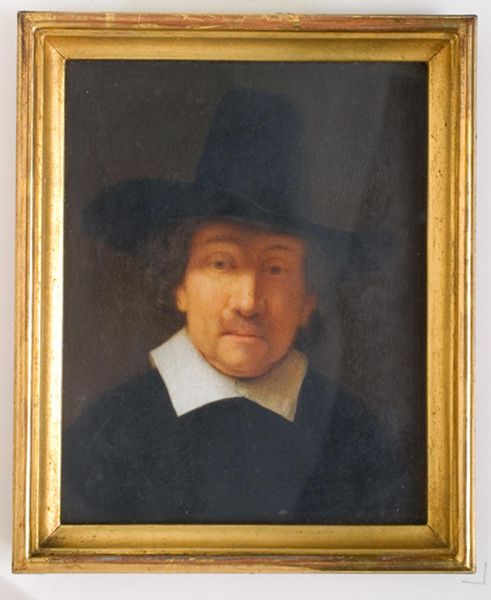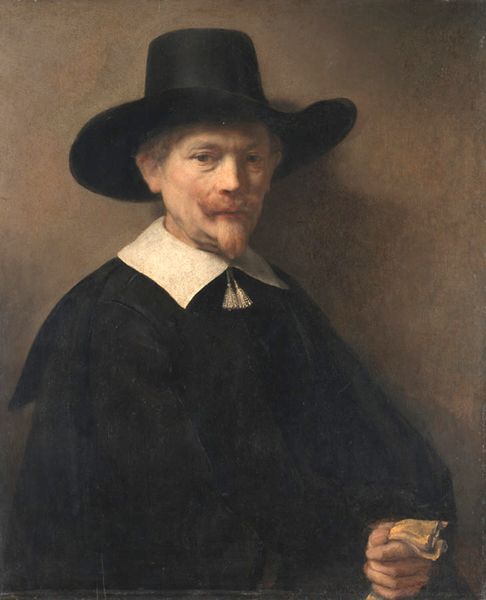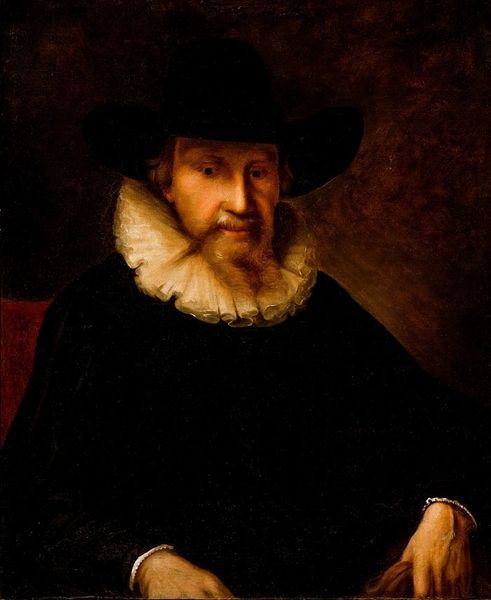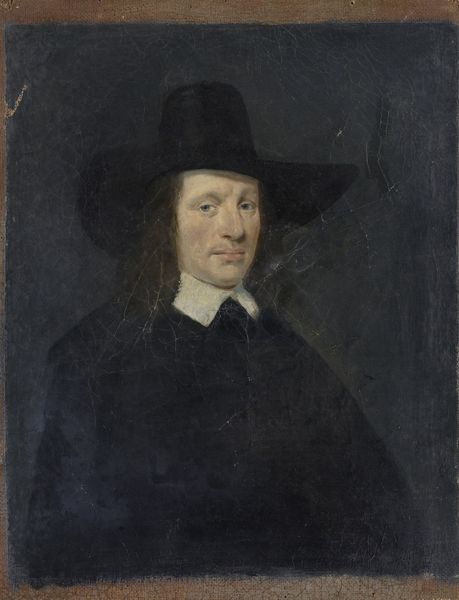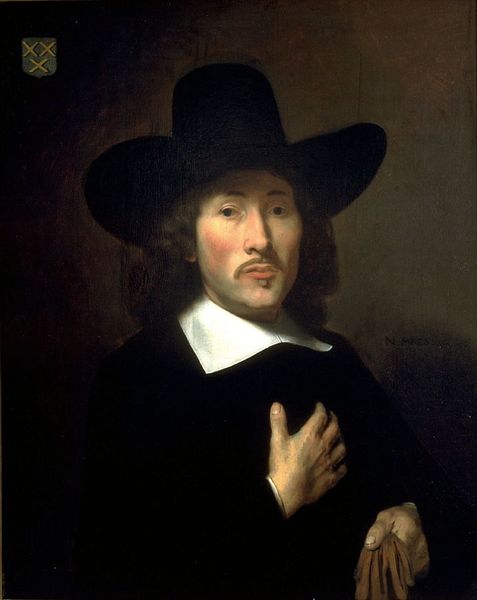
oil-paint
#
portrait
#
self-portrait
#
baroque
#
dutch-golden-age
#
portrait
#
oil-paint
#
men
#
history-painting
Dimensions: 34 1/8 x 28 1/2 in. (86.7 x 72.4 cm)
Copyright: Public Domain
Curator: Here we have Willem Drost’s "Portrait of a Man," possibly a self-portrait, created sometime between 1653 and 1655. The piece is an oil painting and exemplifies the Dutch Golden Age portrait style. Editor: It’s quite dark, isn’t it? The sitter’s face emerges from that inky background, and his hand is such a pale contrast against his clothing. It gives the piece a somewhat melancholy air. Curator: Yes, Drost really makes use of chiaroscuro here. Look at the layering of paint; it's interesting how the luminosity seems built up through glazes of different opacities. He emphasizes texture to denote quality in materials like the linen collar and felt hat. It speaks to the period’s concern with skilled craftsmanship. Editor: That hat casts a long shadow – and you know, the hat itself feels significant. I keep returning to that crisp white collar too. The way the light hits the lace evokes purity and perhaps status. Is it simply an adornment or a symbol? Curator: I think in this era those signifiers were rarely arbitrary. Portraits such as these offered a carefully calibrated presentation of the sitter’s standing. Beyond the personal presentation, look at the technical ability demonstrated in handling oil paints here, you can also imagine the conditions of production in the artist's studio. Editor: The note in the lower-left corner – is it just me, or does that imply some narrative? Like, it suggests this man is not just a face, but an actor in his own story, even with this subdued tone. He isn't directly engaging, but inviting consideration, and offering a sense of internal awareness. Curator: That detail certainly enriches our understanding. His identity becomes somewhat contingent on it. Also, how the artwork would circulate in the community would become as crucial to the art making as the making of the art. The consumption of it and engagement would change over time, too. Editor: Thinking about it more, there’s an interesting psychological space in the play of light and shadow, that subtle symbolism adds more depth than simply documenting a likeness, it conveys a sensibility that's really evocative. Curator: A worthwhile thought. Seeing it through this lens definitely broadens the context of its construction. Editor: Absolutely. I think examining artworks in their cultural contexts helps to create layers of meaning that you cannot reach through the use of any singular point of view.
Comments
No comments
Be the first to comment and join the conversation on the ultimate creative platform.
